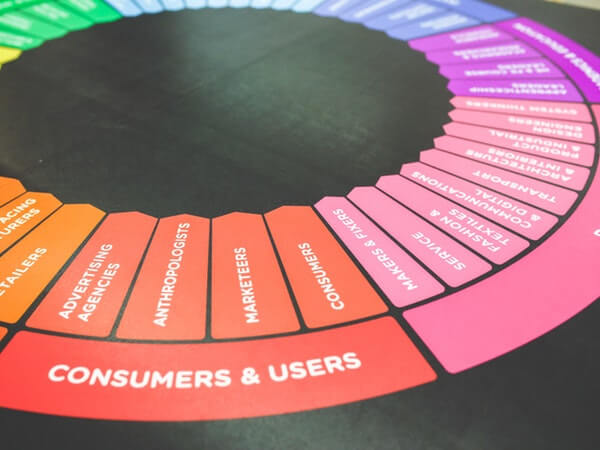
Any online organization would wholeheartedly agree that content is king. Attracting customers to a brick-and-mortar store is one thing, but getting people to click on your site, browse your products, and convert is another. Not only do you have to stand out from your competitors but you have to ensure that your product is as sellable as possible.
We took a look at what two very different online stores are doing to attract customers. In this article, we took a look at their content strategies, tips, ideas, and the unique look that they have on content. They are an online wine and alcohol platform as well as an online insurance comparison site. So, one offers products and other services. The wine company targets high-spending customers with its rare and high-value wines. The insurance company, well, let’s face it, insurance is just not sexy. Both are therefore facing their unique challenges.
So, if you don’t outsource your internet marketing, here are the questions to ask yourself.
What Does Your Content Plan Look Like?
This is rule number one. At the beginning of each year, create the annual calendar and start plotting the vital events. Look holistically at the calendar and tailor it for yourself. Include all of the religious and non-religious holidays, festivals, important days, and weeks that you can take advantage of. Valentine’s Day, Mother’s and Father’s Day, Easter, Halloween, Black Friday, and of course, the festive season. Seasonality needs to also be plotted, changing into spring, winter, and summer. You will be surprised how quickly that calendar starts filling up.
Themes
Next, start plotting your themes. These can naturally fall around what you have already plotted. The run-up to spring for example can be plotted for two weeks, with various topics falling within the theme. Black Friday can run for either a week or two, depending on how much you want to be involved in the mania.
Festive content can naturally last the full month, with new year content taking over directly after the 26th, all the way into the second or even third week of January.
You will find though, that you have a number of weeks where you won’t have content. This is where you can start getting creative with the themes. The wine site, for example, researched when the international cultivar days were and planned weeks around that- i.e. Shiraz Week etc. They also contacted their main clients, found out their event calendars/ harvest times and annual festivals and plotted that in for features.
Another site, an insurance comparison site, made provision for traffic legislation updates, travel seasons, car shows, international car awards, and new releases.
Topics
Now you have most weeks filled with themes. Don’t panic if you cannot fill it out every week. As the year goes on, you will come across new ideas and themes will make themselves apparent. Now you can start looking closely at the topics that you will be covering. Naturally, this depends on how many articles and topics you release in a day, but you will need to keep a few things in mind.
The insurance site releases an article to two articles a day. The wine, on the other hand, releases three to four a week. Depending on your schedule, you need to factor in a newsworthy topic, product-related content, as well as feature articles. The insurance site, for example, found news posts very helpful as headliners for their newsletters as it increased the open rates by about 46%.
2. What Type of Content Are You Putting Out?
Many sites are currently just putting out content for the sake of putting out content. SEO rankings matter keyword frequency obsessed over, tags, blurbs, and images are an absolute necessity. But over and above this, the quality of the content that you are putting out matters too. We know it seems overwhelming, but don’t throw in the towel and sell your website just yet; there are a few handy things to know.
Relevant
Both sites learned very quickly, that if you are not staying on top of content all the time, you will lose out. The wine company needed to make sure that they knew when all of the new releases were taking place, what award was given to whom, and when the products were going on special.
For the insurance company, the newsroom was about breaking news. If they were a day late in picking up a story about a fuel increase, or a new speeding fine process, the interest in the article dropped by 36%. That meant 36% fewer opens on a mailer and therefore an even lower conversion rate. This was simply because they could read it somewhere else!
Informative
Let’s face it, people are going to mostly skim-read most articles and get to the most important points. We cannot convey enough how much more impact articles that are actually informative and helpful have. The insurance company, for example, realized that by posting useful advice, tips, and informative information, they would develop a loyal readership and database. In two years, they had expanded their database to over 100,000 more subscribers.
It became a fully-fledged newsroom where people knew that they would find useful, trusted articles that they could actually use. And the bonus of that was, if they could trust the company with the advice and content that they were reading, they would trust them with their insurance!
The best articles for both sites turned out to be:
- Best Buys;
- Product Comparisons;
- How To’s;
- Feature Posts;
- News Articles.
3. What Platforms Are You Using?
Let’s move on to the platforms and types of content that you are putting out. Once you have started your online store, you need to expand your platforms of reaching an audience. What was interesting for both sites was ensuring that the themes and topics for the week get translated into various mediums and curated uniquely for the various platforms.
Blog/News Articles
Most content starts here as articles or blog posts for most companies. For both companies, these articles are published on the site, shared via social media, and placed in the Newsletters. For the insurance site, the headlining article is used as the subject line of the newsletter for clickability.
Breaking news, controversial articles, changes to legislation, fuel increases; basically, anything that will be directly impacting the reader is placed as the headlining article. Anything else here drops the open rate significantly and the company learned quickly that hard-hitting, informative, and useful content sells.
For the wine site, it is a toss-up. Because it is a product-based site, content has to revolve around the various products. So, if something is on offer, or if there is a new release, they would add in a content piece in the mailer to promote the product even more. This worked wonders, especially for the rarer and unique releases. An informative, personalized piece about the product increased sales by 38% as the recipient had a more personal connection to the product. The mailers, therefore, integrated the products as well as links to the articles.
Video Content
What both sites do is convert the blog posts into video content. Videos are quickly becoming the dominating source of content on the internet today. What has been very successful for both sites is integrating this into the marketing strategy.
For the insurance company, one or two topics are chosen a week to convert into a video. The “How-To” Articles were highly successful as they were interesting videos shot about how to save money, or how to change a car tyre. Other videos were shot with influencers to increase the viewership and therefore the conversion rate. Car comparisons turned out to be the most popular category for video content, especially if we have influencers in popular, affordable cars.
For the wine company, most content could be converted into video content. From winemaker interviews, tours of the estates, wine pairing, wine tasting, even cooking and cocktail mixing, they had their pick. And most of it was a lot of fun too!
What needs to be kept in mind is that videos take a lot longer than written content to create, and this needs to be kept in mind for the content calendar and for production time. If you are wanting to send out your content all within the same time frame, which makes more sense, you need to plan well in advance.
Surveys
One of the more interesting additions to the content strategy was surveys. For the insurance company, surveys are created around a topic that is included in the mailer and included just underneath it in the newsletter for readers to fill out.
Not only did this increase the clicks on the actual post, but the company started getting some useful feedback from customers and readers. It turned out to be a great content-generating tool as more topics sprang out of the questions that were posted. Survey results were also curated and turned into graphs that were shared on social media.
In Wrapping Up
There are so many great ideas for content that can easily be included in your strategy. One hint is to keep AB testing everything. If you are implementing a new process, AB tests all parts of it until you find the optimized results that you are looking for. And lastly, don’t be afraid to try new things, you never know what is going to surprisingly work out for you!

